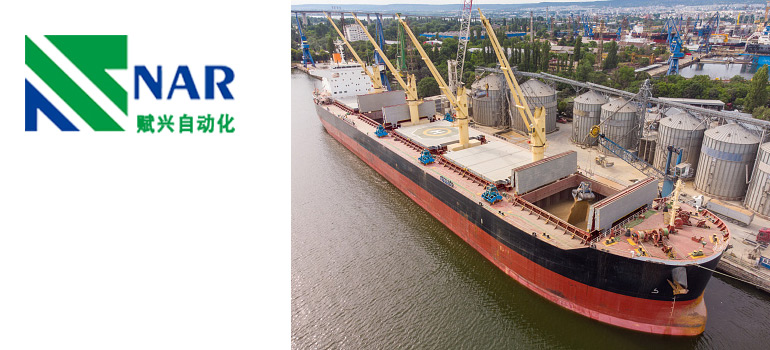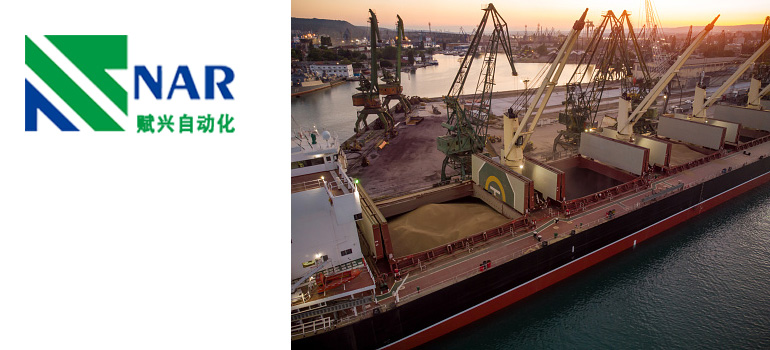Ship loading is a large bulk material machine used for loading at bulk material terminals. The generalship loader consists of a boom belt conveyor, a transition belt conveyor, a telescopic chute, a tail car, a traveling device, a portal frame, a tower, a pitching device, and a slewing device.
Large port bulk loading equipment plays an important role in the high-speed, stable, efficient, and rolling development of energy, power, metallurgy, ports, and other industries, especially some bulk material distribution centers.
The development of global trade integration has promoted the global demand for bulk material transportation. You can choose the appropriate ship loader according to the demand. The following will take you to understand the 5 types of ship loaders.
5 Types of ship loading

Radial telescopic shiploaders
The following are the advantages of radial telescopic ship loaders:
- Radial telescoping ship loaders provide effective loading capacity for ships of different specifications such as ports and docks. He can complete feeding through truck unloaders, mobile feeders, and conveyors
- The dust suppression system handles bulk materials, with fully sealed feed and discharge points to reduce the impact of dust spills on the environment;
- The telescopic arm can be extended to 190 feet
- Loading capacity can be designed based on demand, up to 3000 TPH
All wheel travel ship loader
The all-wheel travel ship loader can achieve 360 ° steering to meet the restrictions of the terminal ship. The following are the advantages of all wheel travel ship loaders:
- Provide all-round selection based on the location of different cabins
- The outer conveyor belt has a full length galvanized dust cover, and the inner conveyor belt has a canvas telescopic dust cover to reduce dust floating in the air and rainy and snowy weather
- Inner conveyor side wind shield to prevent wind
- Environmental protection: The transfer point from outside to inside is fully enclosed, and the feeding point and transfer point are equipped with a dust removal system
- 8.5 m telescopic step discharge chute, equipped with control panel wiring
- Simple and controllable operation, equipped with radio remote control
Rail-mounted ship loader
Rail-mounted ship loaders operate flexibly along specific tracks to complete the loading of materials.The following are the advantages of Rail-mounted ship loaders:
- Stable operation for rapid material transfer.
- Fully integrated with the feeding equipment – tripper/overhead conveyor system.
- The dust removal system, with the feeding and discharging points completely sealed, reduces environmental pollution caused by dust spillage.
- The speed of rail type ship loader can reach 3000TPH.
- The extended length of the rail loader can reach 190 feet
Arc-shaped boom ship loader
The following are the advantages of Arc-shaped boom ship loader:
- Arc boom, linear and parallel motion
- It can be used independently or connected to a single/dual belt feeder.
- Unloading arm with integral three-roller groove idler.
- The loading capacity of the arc-shaped boom mobile ship loader can reach 2000 tons per hour
- Multiple options for power drive: diesel, electric, diesel/electric, diesel+electric.
Direct feed barges and loaders
Direct feed barges and ship loaders allow direct loading of feed from the dock, improving production efficiency and minimizing labor.The following are the advantages of Direct feed barges and ship loaders:
- Easy to load and unload materials by trucks.
- Loading rate up to 1500 TPH (depending on the feeding equipment).
- The design range and hopper capacity depend on the on-site feeding equipment and productivity.
Ship loaders are used to effectively and continuously load ships, playing an important role in the high-speed, stable, efficient, and rolling development of energy, electricity, metallurgy, ports, and other industries, especially some bulk material distribution centers. Different types of ship loaders are suitable for various capacities and ship sizes.
For more loading and unloading equipment options, please contact PT.nar.

